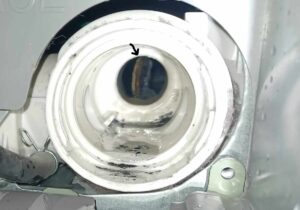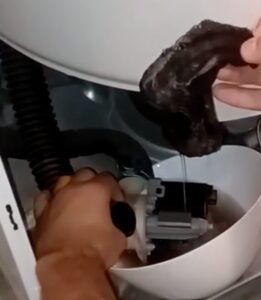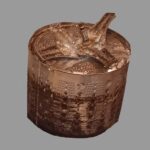Serge Appliance Repair Ottawa.
1. The washer doesn’t drain.
This problem occurs in 40% of all service calls for washing machine repair. Why? The washer drain system directly interacts with all debris from our clothes: coins, pins, socks, ropes, bolts, lint, and hair. As a result, the drain hoses will be clogged, or the drain pump will be stuck or broken. This problem seems straightforward. Clean it. However, to diagnose and repair the issues with the washing machine’s drain system, an appliance repair technician needs to have a better understanding of it.
What will we see?
There are some variants:
- The washer isn’t starting and buzzes. Why? Before beginning the cycle, the washer checks the drain. No drain, no start.
- The washer stops midway through the cycle. Usually, when the drain is not blocked completely, it starts but stops during the evacuation cycle.
- The washer’s door is locked. When some water remains in the washer, it will block the door.
- Noisy drain cycle. It could be a coin in the pump or a broken pump.
The last case is tricky:
- Your washer sometimes works fine, but sometimes it stops in the middle. This is the tricky thing. My coworker showed me the secret when I was a young appliance repair technician. The 2$ coins have the same diameter as the drain hose. This coin will get stuck in the hose. It will spin and switch: sometimes to the position where the water flows, and sometimes, the exit will be free.
In this picture, you can see a coin in the hose connected to the pump.

But how can these objects get out through the small holes of the drum of the washing machine?
This is a good question. They don’t. After all, it was constructed so that only water could go out, and clothes stayed inside. I can discover the secret. The drum of the front-load washer is opened on the front side. This door rubber should protect against water leaking from the side of the door and against small objects exiting from the drum side to the drain system. This task was difficult because the drum spins, so a small gap exists between the drum edge and the seal. The older the washer, the more the rubber will lose its flexibility and the bigger the gap. Another thing to keep in mind is avoiding overloading the washing machine. With more clothes in the drum, there is more pressure on the front side of the washer, allowing panties and socks to exit through the drum-rubber gap.
The arrow points you to the space between the rubber and the drum where some clothes can enter.

What happens then?
All the water drawn by the pump is directed to the washer’s tub, then through the thin hose underneath to the filter, to the pump, and finally to the drain hose. So, the larger objects (such as socks) will block the thin hose, while the smaller ones will clog the filter, pump, and drain hose. The drain system has several variants: one without a filter and another without the thin evacuation hose (the pump is connected directly to the tub). But the strangest system is in some Maytag washing machines. Their filter is inside the thick hose connecting the tub and the pump!

How can we avoid drain problems?
Check your clothes for contents.
Don’t overload the washer.
Check the filter.
Why does the washing machine not do the final spin?
First, we need to understand why the washing machine doesn’t spin.
To start the spin, two conditions have to be met:
- The water is drained from the drum.
- The drum with clothes is balanced enough to allow a fast spin.
When the washer stops before the spin cycle and water remains inside, it is a drain system issue, which I explained in the first part of the article.
If the washer empties water and doesn’t stop, but continues to turn, it indicates a balance issue. You can try all the advice for balancing and levelling that you can find in every single article devoted to this topic: adjust the legs of the machine, put fewer clothes in, and spread clothes properly in the drum. But when people call a washing machine repair technician, it won’t be for these things.
2. Shaft-Spider problem
The diagnostic
The primary cause of no-spin problems in front-load washing machines is the drum/ shaft/ spider issue. This is a widespread dysfunction of LG and Samsung. These are the symptoms of this problem:
- The washer drains water fully, but water remains in the clothes.
- The drum turns slowly at first, then tries to gain speed; sometimes, it bangs against the walls and stops.
- Usually, the display shows 8-10 minutes, and then it stops. Then, the numbers change to the start of the drain/spin cycle (15 minutes), and the washer begins again, attempting to balance the drum.
- Clients often tell the appliance repairman that their washing machine smells during the high-speed spin. This is the second variant of the same problem.
The understanding
To understand this problem, take a look at the picture of the drum of the front-load washer below. The washer’s drum turns on the shaft. Through its three arms, the spider provides a connection between the shaft and the drum. When the spider is broken, the drum will be unbalanced during the spin cycle, but it will be ok for the wash cycle when it doesn’t need perfect balance. Another result could be the drum moving forward and touching the door rubber. While spinning rapidly, the drum edge will heat the seal and emit smoke due to friction. My article about the shaft/spider problem:
Why Won’t Your Samsung Washer Finish the Spin Cycle? The proper understanding and diagnosis of the problem.

Broken spider of the LG washer








